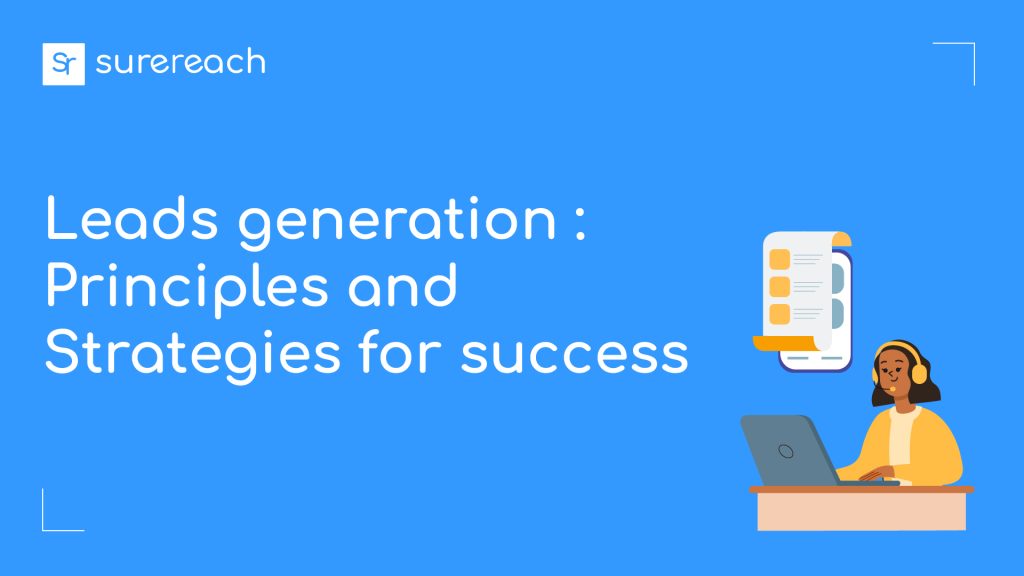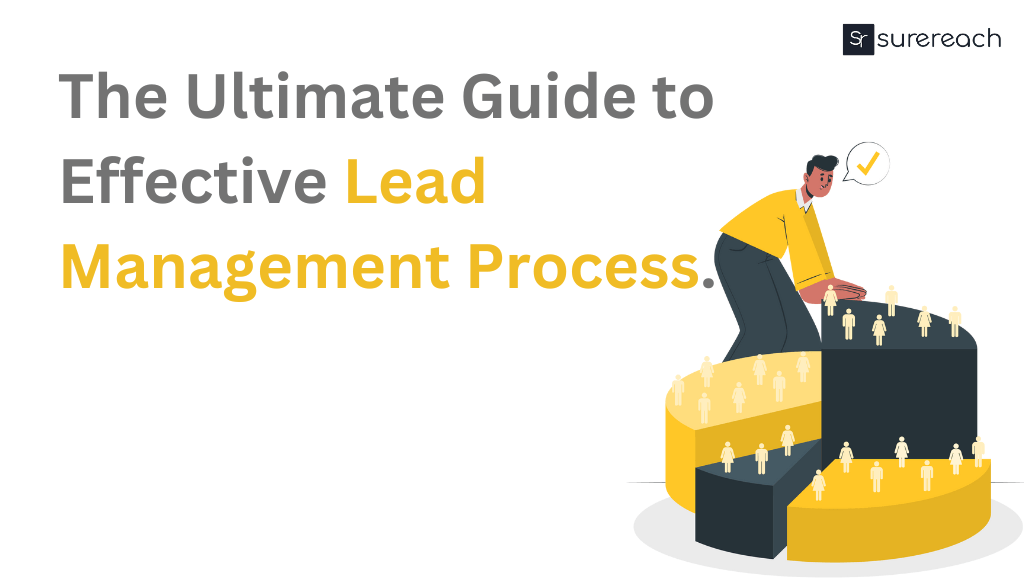Lead generation: Key principles and techniques
Lead generation is a crucial aspect of any business’s marketing strategy. It involves identifying and acquiring potential customers for a company’s products or services. A successful lead generation strategy can help a business grow by providing it with a steady stream of qualified leads that are more likely to convert into paying customers. However, there is no one-size-fits-all approach to lead generation. The best strategies are tailored to a business’s unique needs and target audience.
In this article, we will explore the key principles and strategies for successful lead generation. We will discuss how to target the right people at the right time, use social media to build your sales pipeline, develop content that aligns with the buyer’s journey, monitor your competition, network, track website visitors, and use the right tools and techniques to track your leads and nurture your potential audience.
Target the Right People at the Right Time
One of the key principles of successful lead generation is to target the right people at the right time. This means understanding who your target audience is, what their needs are, and how they behave. By identifying the characteristics and behavior patterns of your ideal customers, you can tailor your marketing messages and offers to reach them at the right time when they are most likely to respond positively.
For example, if you are a B2B company that sells business software, your target audience might be small to medium-sized business owners or managers. You would want to target these individuals with relevant offers and content that addresses their needs and pain points. This could include blog posts, case studies, or webinars that provide valuable information and insights on how your software can help them improve their business operations.
One effective way to target the right people at the right time is to use retargeting or remarketing. This involves showing targeted ads to individuals who have already visited your website or interacted with your brand in some way. By retargeting these individuals, you can remind them of your products or services and encourage them to take action.
Use Social Media to Build Your Sales Pipeline
Social media is a powerful tool for lead generation. It can help you build your brand, engage with your audience, and generate leads for your business. By creating a presence on social media platforms such as Facebook, LinkedIn, and Twitter, you can reach a wider audience and connect with potential customers who are interested in what you have to offer.
To effectively use social media for lead generation, you need to create a strategy that aligns with your business goals and target audience. This could involve sharing valuable content, running promotions and contests, or using paid advertising to reach more people. You should also monitor and track your social media performance to see what is working and what isn’t, and make adjustments accordingly
Develop Content Around the Buyer’s Journey
The buyer’s journey is a framework that helps marketers understand how consumers make purchasing decisions. It typically includes five stages: awareness, consideration, decision, purchase, and post-purchase. At each stage, consumers have different needs and challenges, and they are looking for different types of information and support.
To be successful with lead generation, you need to develop content that aligns with each stage of the buyer’s journey. For example, if someone is at the awareness stage, they might be looking for general information about a product or service. You could provide them with blog posts, videos, or infographics that give them an overview of what you have to offer. If someone is at the consideration stage, they might be looking for more detailed information about how your product or service compares to others in the market. You could provide them with case studies, product demonstrations, or customer testimonials that
Highlight the benefits and features of your offering.
By developing content that addresses the needs and challenges of your target audience at each stage of the buyer’s journey, you can provide valuable information and insights that will help them make an informed decision about whether to purchase from you. This can help you generate leads and build trust with your potential customers.
Sign up and get 20 credits for free!
We have 3 million+ contacts stored to connect you with prospects all over India
Keep Monitoring Your Competition
Another key principle of successful lead generation is to keep an eye on your competition. By understanding what your competitors are doing, you can gain valuable insights into their strengths and weaknesses, and develop strategies to differentiate yourself from them.
To monitor your competition, you should regularly check their website and social media channels to see what they are promoting, what content they are sharing, and what offers they are making. You should also pay attention to any changes or developments in their product or service offerings, pricing structure, customer support, and sales process. By staying informed about your competition, you can identify opportunities to improve your own lead generation strategy and stay ahead of the game.
Start Networking
Networking is another important aspect of lead generation. By building relationships with other businesses and individuals in your industry, you can gain access to a larger pool of potential customers. You should make an effort to attend industry events, join relevant professional organizations, and reach out to other businesses and individuals who might be interested in what you have to offer.
By networking, you can not only generate leads, but you can also learn from others, share your expertise, and build your reputation as a thought leader in your field. Networking can also open up new opportunities for collaboration, partnerships, and referrals, which can help you grow your business and generate even more leads.
Track Your Website Visitors
To be successful with lead generation, you need to know who is visiting your website and what they are doing while they are there. By tracking your website visitors, you can gain valuable insights into their behavior and interests, and use this information to tailor your marketing messages and offers to their needs.
There are many tools and techniques you can use to track your website visitors. Some popular options include Google Analytics, which provides detailed data on traffic sources, demographics, and user behavior; heatmap tools, which show where visitors are clicking on your website; and lead tracking software, which allows you to see which leads are coming from your website and how they are interacting with your content.
By tracking your website visitors, you can gain a better understanding of who your potential customers are and what they are looking for. This can help you develop more effective lead generation strategies and improve your conversion rates.
Use the Right Tools and Techniques to Track Your Leads
In order to be successful with lead generation, you need to have the right tools and techniques in place to track your leads and manage your sales pipeline. This could include a CRM (customer relationship management) system, which allows you to store and organize information about your leads, and a marketing automation platform, which helps you automate repetitive tasks and nurture your leads with personalized content.
By using the right tools and techniques, you can efficiently track and manage your leads, and ensure that they receive the right information at the right time to move them further down the sales funnel. This can help you generate more qualified leads and increase your conversion rates.
Use Email Marketing to Nurture Your Potential Audience
Email marketing is another effective tool for lead generation. By sending targeted and personalized emails to your potential customers, you can nurture their interest in your products or services, and encourage them to take action.
To be successful with email marketing, you need to have a well-defined target audience and a clear understanding of their needs and pain points and optimize your emails for mobile devices, as more and more people are accessing their email on their smartphones.
By following these principles and strategies, you can develop a successful lead generation strategy that is tailored to your business’s unique needs and target audience. By targeting the right people at the right time, using social media to build your sales pipeline, developing content that aligns with the buyer’s journey, monitoring your competition, networking, tracking website visitors, using the right tools and techniques to track your leads, and using email marketing to nurture your potential audience, you can generate more qualified leads and increase your conversion rates.
In conclusion, lead generation is a crucial aspect of any business’s marketing strategy. By following the principles and strategies outlined in this article, you can develop a successful lead generation strategy that is tailored to your business’s unique needs and target audience. By targeting the right people at the right time, using social media to build your sales pipeline, developing content that aligns with the buyer’s journey, monitoring your competition, networking, tracking website visitors, using the right tools and techniques to track your leads, and using email marketing to nurture your potential audience, you can generate more qualified leads and increase your conversion rates.
Read about how to generate leads for free here








Abhishek Kumar
Abhishek Kumar is a experienced B2B sales professional with a track record of success in helping companies achieve their sales goals. He has a deep understanding of the B2B sales process and is passionate about sharing his insights and expertise through his blog, where he offers valuable advice and tips for fellow sales professionals.
More posts by Abhishek Kumar